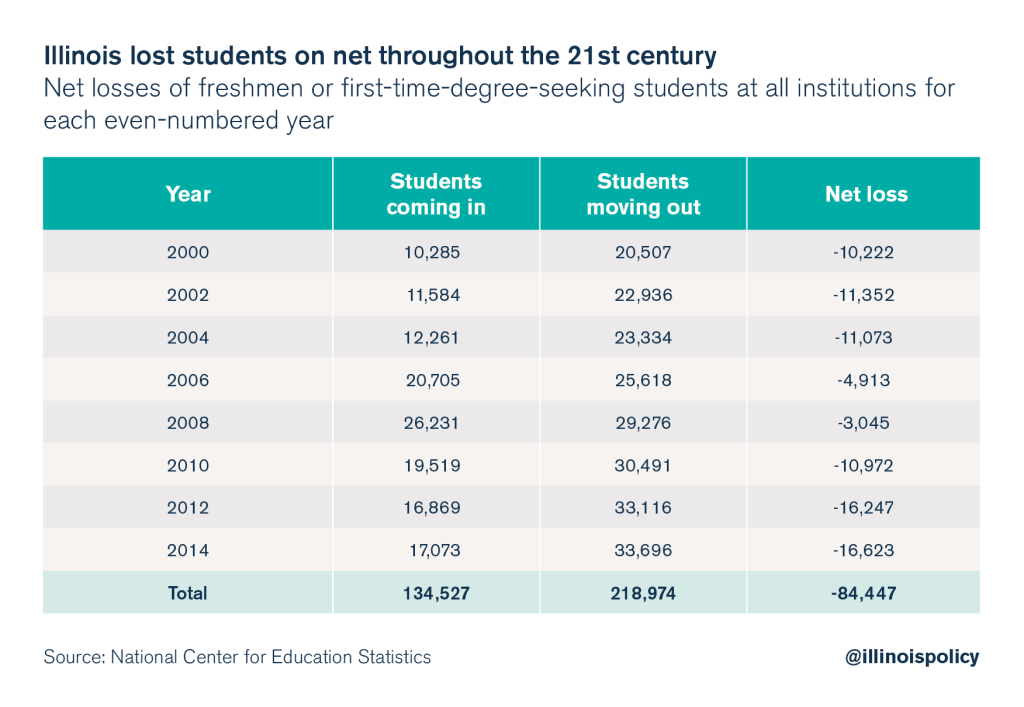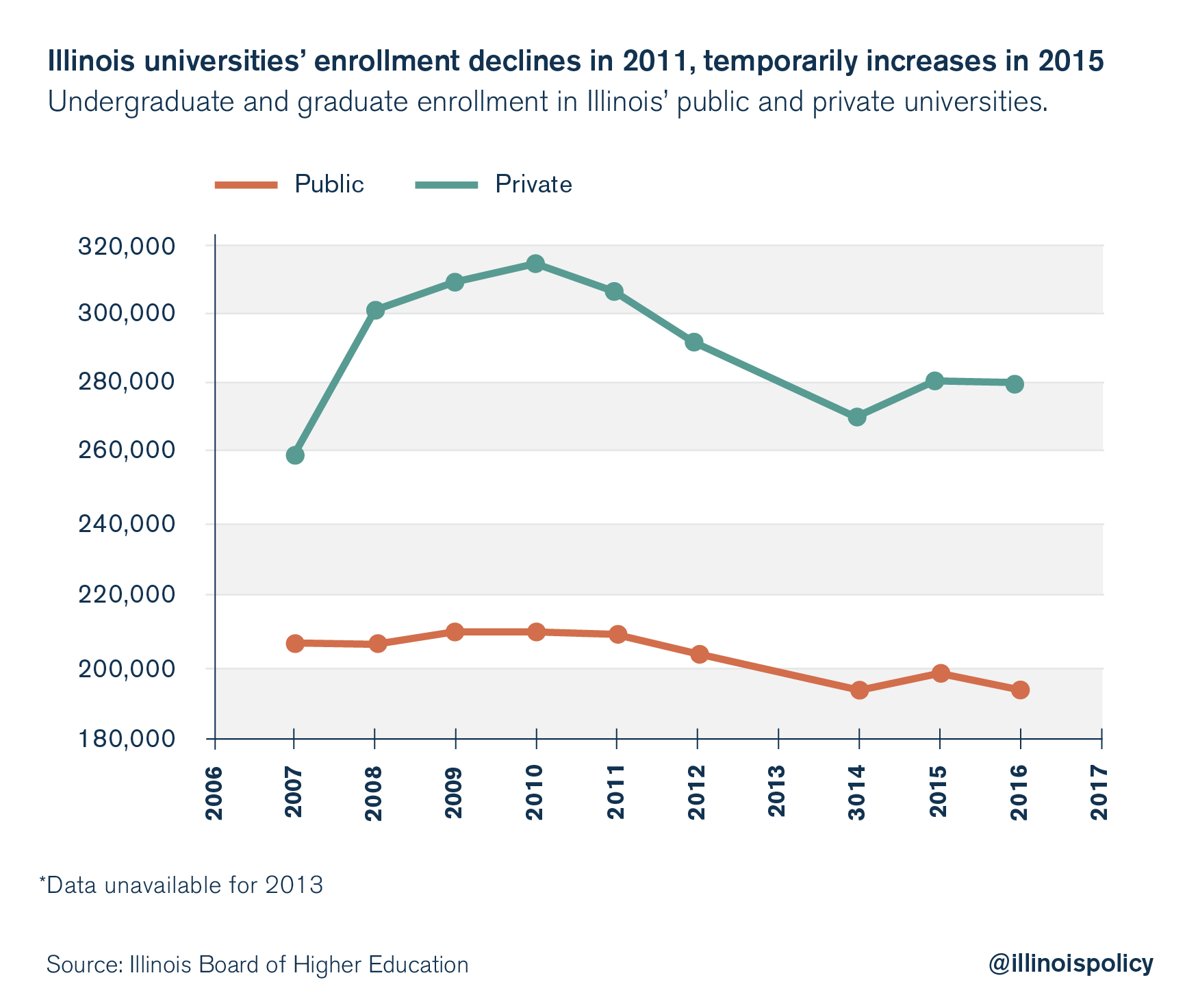Fact-checking Rahm: Students have been leaving Illinois for at least 15 years
Uncertainty about skyrocketing tuition costs, rising taxes, and other factors are the likeliest culprits of Illinois’ student out-migration crisis.
Illinois has lost an estimated 150,000 students over the past 15 years.
It’s a trend that has played out under the tenures of at least Illinois’ three preceding governors, and it may be continuing under Gov. Bruce Rauner. The exodus is likely partly attributable to tuition at Illinois’ public colleges and universities having skyrocketed almost 100 percent over the last decade, while administrator and pension costs have eaten up bigger chunks of higher-education tax dollars, making a college degree unaffordable for many students and their families.
But Chicago Mayor Rahm Emanuel politicized Illinois’ loss of students to other states by placing the blame squarely on Rauner.
Emanuel charged Rauner with driving students out of Illinois in a March 7 statement reported by the Chicago Sun-Times: “Kids from the state of Illinois are leaving the state to go to college when we used to be a net gain … More people are leaving our state … and this is all under [Rauner’s] tenure.”
But Illinois hasn’t been gaining students, on net, since at least the start of the 21st century. So students were definitely leaving under former Govs. Pat Quinn, Rod Blagojevich and George Ryan; but, while they may still be leaving under Rauner, official student migration numbers aren’t yet available.
It’s unclear where Emanuel’s data come from, but the National Center for Education Statistics, or NCES, data show a net loss of an estimated 150,000 students from 2000 through 2014, with an average yearly net loss of about 10,000 students. By 2012, during Quinn’s tenure, Illinois’ student net loss creeped up to more than 16,000 annually.

Student migration data is not yet available for the Rauner years, so it’s impossible to say for sure how student inflow and outflow has changed.
However, Illinois’ higher-education enrollment data, which is available through fall 2016, may provide some hint at whether Illinois is now losing more students to other states. This isn’t an ideal measure, because enrollment doesn’t necessarily correlate with net student gains or losses from other states. That’s because it could be reflecting other trends, such as overall increases or declines in college attendance. Nevertheless, over the past decade, enrollment at Illinois’ public and private universities and institutions began declining in 2011, according to data from the Illinois Board of Higher Education. Enrollment actually saw a substantial increase over the previous year in 2015, before dipping again in 2016 to pre-2015 levels.

Tuition at Illinois’ public colleges and universities grew over 100 percent over the past decade
Illinois is suffering from an out-migration crisis, and students are part of the exodus. But it’s not a new development triggered by the stalemate of the past two years; the trend was clearly underway since at least the turn of the century.
To be sure, the budget impasse and the mounting stack of unpaid bills cause uncertainty, and if more students are leaving Illinois, that’s likely a factor. But another major factor for the state’s public colleges and universities is likely tuition uncertainty fueled by skyrocketing tuition costs, which coincide with the redirecting of taxpayer dollars away from the classroom and toward growing administrator and pension costs. Constant tax hikes and the ensuing tax uncertainty don’t help either.
In other words, a student may ultimately decide against an Illinois university if she can’t predict what her tuition or tax burden will look like from one year to the next.
Emanuel, like many Illinoisans, is frustrated. The state is failing by nearly every measure. In fact, that’s presumably the main driver of divestment from the state, by students and others. But baseless finger-pointing only shrouds the real issues and delays action aimed at getting the state on the right track.
The significant net loss of students since the start of the 21st century is just a symptom of a deeper problem. Illinois isn’t working – and hasn’t for decades. Neither blaming the governor for disadvantageous trends that started well before his term, nor throwing money at the state’s problems will fix it. That will require real policy changes that focus on growing the economy, lowering the tax burden, fixing cost drivers, and reducing state spending.
